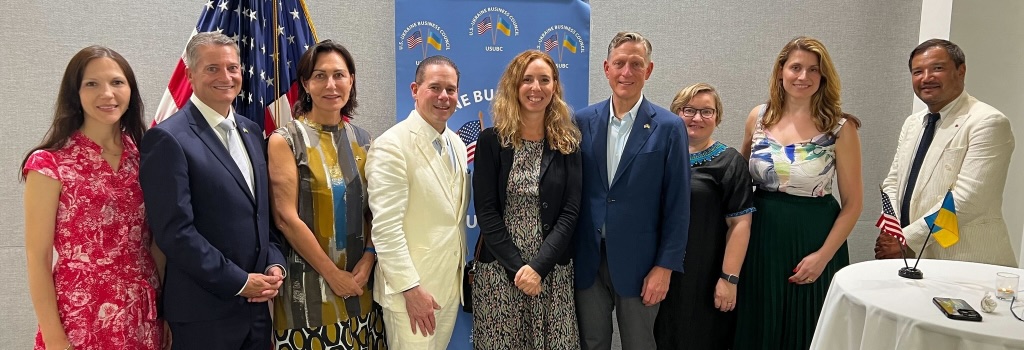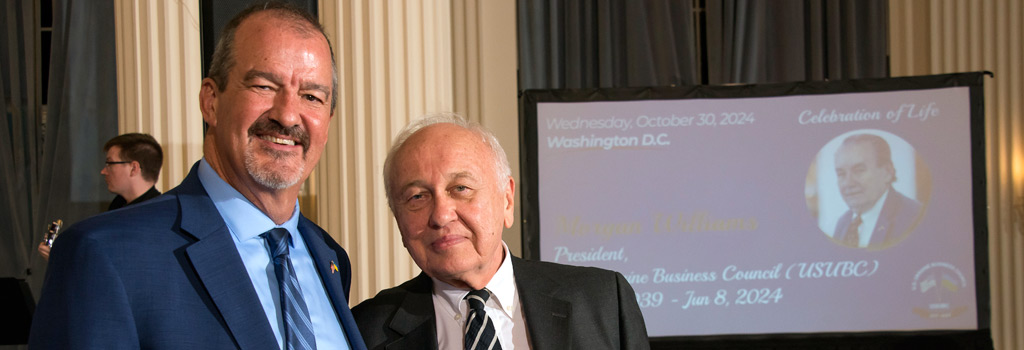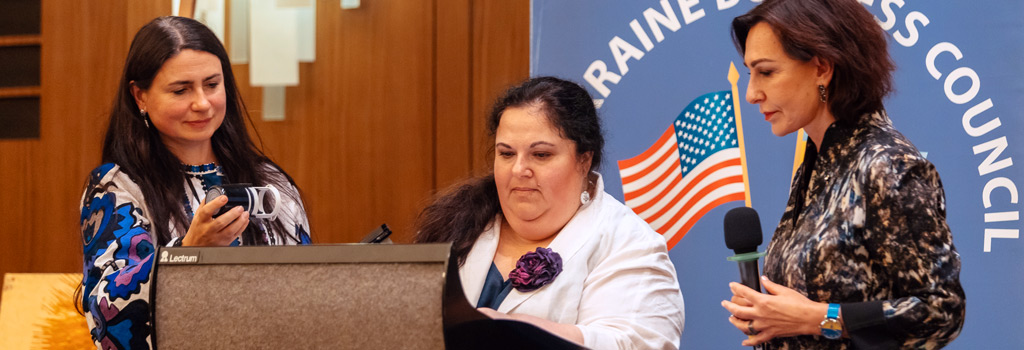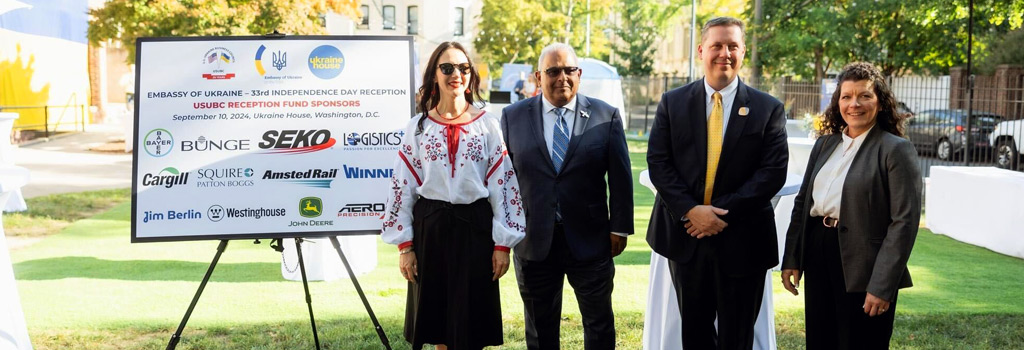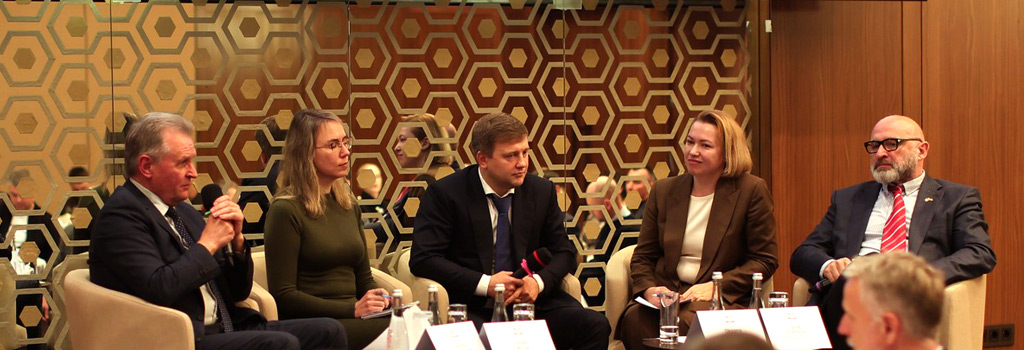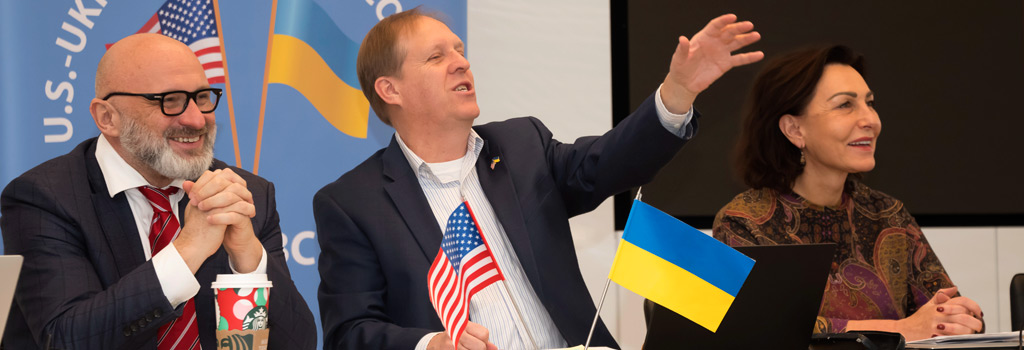Featured Galleries USUBC COLLECTION OF OVER 160 UKRAINE HISTORIC NEWS PHOTOGRAPHS 1918-1997
 Holodomor Posters
Holodomor Posters

A Bold Policy to Protect the US
by Helping Ukraine Stop Russian Aggression
 Ambassador John Herbst, senior director of the Atlantic Council’s Eurasia Center, testifies before the Commission on Security and Cooperation in Europe (Helsinki Commission) hearing on “Closing the skies, liberating Ukraine.”
Ambassador John Herbst, senior director of the Atlantic Council’s Eurasia Center, testifies before the Commission on Security and Cooperation in Europe (Helsinki Commission) hearing on “Closing the skies, liberating Ukraine.”
Testimony by Amb. John Herbst
Atlantic Council
Wash, D.C., Thu, May 16, 2024
Below is the oral argument presented by Ambassador John Herbst.
The greatest national security challenge facing the United States is the partnership of aggressive authoritarian regimes seeking to undermine US leadership globally. The larger long-term threat comes from China.
But the greatest short-term danger comes from our peer nuclear power, Russia, which is conducting a savage war designed to subjugate Ukraine and which would like to restore political control over all the territory of the Soviet Union, including three NATO states.
Ukraine is the place where we can and must deal a decisive blow to our adversaries. If we help Kyiv defeat Putin in Ukraine, we prevent further Russian aggression to the west and send a cautionary message to Xi to lay off Taiwan. It would also make it harder for Moscow to enable further Iranian aggression in the Middle East—a key factor in Hamas’ assault on Israel and the Houthis’ attacks on global shipping.
What does this mean for American policy now that Congress has passed the aid bill. The administration must first identify what is at stake in Ukraine. The problem is not a war in Ukraine, but a nuclear power seeking to subjugate Ukraine, and then move further west.
Containing a revisionist Russia…
Two things flow from this. First, we need a policy of containment for Russia, a position endorsed by representatives from ten think tanks at a Capitol Hill conference in early February. The place to contain and defeat Moscow is in Ukraine, a large country fighting for its right to live free as proud Ukrainians.
Stopping Moscow there does not involve American soldiers. If our need is to contain and defeat Russia, providing $40 billion in aid a year is not a gift to Ukraine, but a smart investment in US security that represents under 4 percent of our defense budget.
Second, we need a clear policy goal towards Moscow’s war on Ukraine. The administration has repeated frequently that it would “stay with Ukraine as long as it takes.” That is not good enough. We need a clear goal of dealing a defeat to Russia or enabling a victory by Ukraine.
And enabling a Ukrainian victory…
What does this look like? The first order of business is to enhance Ukraine’s defensive lines so that Russia does not add to the incremental gains made when US military aid was in doubt. Russia is trying to take the town of Chasiv Yar and Kharkiv, 30 kilometers from the Russian border. Lately the Administration has moved smartly to get ammunition and artillery to Ukraine.
But more needs to be done to protect Kharkiv, other Ukrainian cities, and critical energy infrastructure from Russia’s massive aerial assault. This requires more air defense systems - American-produced Patriots and French SAMP-Ts. Ukraine has three Patriot batteries; it needs at least nine more. Some allies not in harm’s way could fill this void.
There is a second dimension to this problem coming from American reluctance until mid-last year to back sending of F-16s to Ukraine even from European countries. NATO Allies are now on track to deliver over an air brigade’s worth of aircraft.
Ukraine needs well over one hundred F-16s in order to stop Moscow’s successful use of glide bombs, launched from Russian warplanes that have been pounding Kharkiv. These F-16s would also be essential to any Ukrainian offensive in 2025. The White House needs to decide now to arrange the transfer of US F-16s with the necessary avionics and missiles.
Kyiv will choose the target of its next offensive. Putin’s greatest achievement in his ten-year war on Ukraine was the seizure of Crimea. But that asset is also a liability because it needs energy, water and weapons supply via the Kerch Bridge and the “land bridge” from occupied Donbas.
The principal land bridge supply line is the railroad that runs south of Melitopol. Fear that a Ukrainian move 25-50 kilometers south and east of current lines could jeopardize rail supply has prompted Moscow to start constructing a line along the coast of the Sea of Azov.
The United States needs to take the lead in supplying Ukraine the means to jeopardize these supply lines. Were this to happen, the Kremlin would find it very expensive to supply Crimea, and Russian troops in Ukraine’s mainland south might find it necessary to retreat to either Crimea or Donbas. This would be a major setback and might even pose political problems for the Putin regime.
The administration must not repeat the mistakes of the first two years since the big invasion — undue caution in approving the transfer of the more advanced weapons systems Ukraine needs for success. The aid bill explicitly calls on the Administration to avoid this approach.
A strong policy designed to promote a Ukrainian victory would include an arms package with more de-mining equipment, tanks, artillery, and advanced electronic warfare (EW) capabilities. But the key here is not to enumerate all the current weapons needed.
It is to make sure our policy follows military developments closely with the objective of anticipating and responding quickly to meet new Ukrainian needs on a fast-evolving battlefield.
This also means that we need to change the Rules of Engagement for use of our weapons. We should follow the British and permit Ukraine to use our equipment to strike all military and military-related economic and logistical targets not just in occupied Ukraine, but in Russia. Russian troops and supplies are massed in Russia, less than 100 kilometers from Kharkiv. Why should we shackle Ukraine’s defense of its second largest city?
Organizing and innovating for success
The United States must also organize itself to meet the current, grave national security challenges. We need to put ourselves on a crisis or even a war-time footing. Major power war is arms-intensive. The United States and its allies need to substantially ramp up arms production, not just to arm Ukraine, but to prepare for a possible confrontation with Russia or China.
The United States should also name a senior official with the authority to ensure our increase in defense production and our efforts to facilitate a Ukrainian victory. That official would make sure that we are expediting the delivery of our military aid and other assistance and ensure integration of lessons learned from the battlefield into our assistance and plans for our own weapons production.
Finally, the administration should remove restrictions on military contractors from working in Ukraine—to aid Ukraine’s effort to establish maintenance and sustainment facilities for US equipment.
Congress too has a critical role to play in ensuring Ukraine the means to defeat Putin. The war shows the need for much greater flexibility in defense authorizations and appropriations. This means multi-year appropriations and greater flexibility in approving defense expenditures.
Normally, Congress approves specific weapons projects. But the war in Ukraine has shown how rapidly even new weapons find themselves thwarted by electronic warfare countermeasures. Therefore approved weapons expenditures must have built in approval for adjustments as required by battle space developments.
The United States won in World War II and in the Cold War in part because we had the ability to out-innovate and out-produce our foes. We need to build into our appropriations process measures that enable constant innovation.
None of this is beyond our means. We have a proud history of marshaling our material and intellectual resources to meet the greatest challenges. Doing so to ensure a Ukrainian victory is the smart way to keep us secure and prosperous. It is also the right thing to do to stop Moscow’s massive war crimes in Ukraine.
NOTE: Amb. JOHN HERBST is Senior Director of the Atlantic Council’s Eurasia Center and a former U.S. Ambassador to Ukraine. John Herbst is a Senior Advisor of the U.S.-Ukraine Business Council (USUBC).
